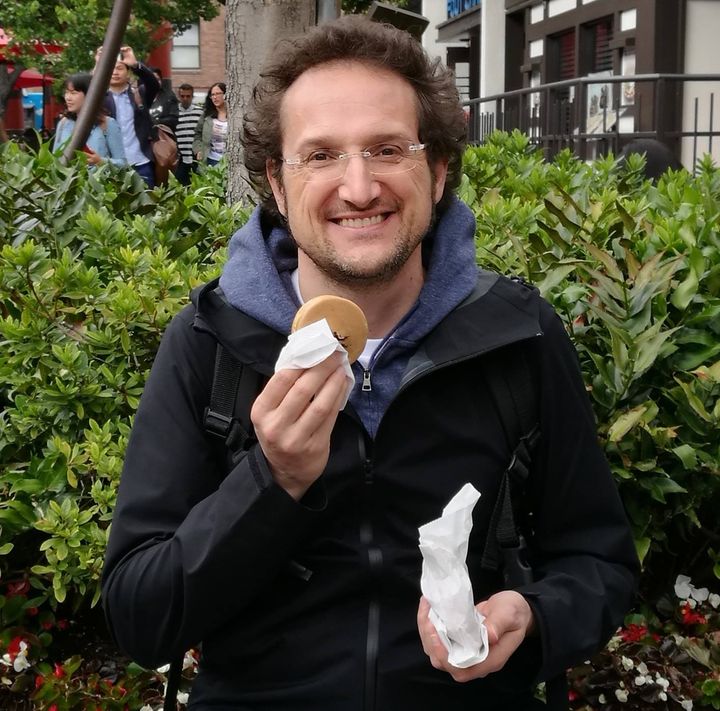Here's another portrait example, which illustrates a particular XPan challenge for which lots of shift is a good solution.
The tl/dr version is that XPan portrait orientation is harder than XPan landscape when you're standing at "ground level" (unless lots of sky is what you're after). That's why the few portrait XPan portrait examples we see that aren't mostly sky or mostly foreground often are taken from the top of a hill or a tall building. There are some workarounds that might work.
=====
This is a "ground level" picture of the Sleeman Brewing and Malting Company's factory in Guelph. Apologies for the really boring light. It's January in southern Ontario, the sun has been AWOL for weeks, and it was getting ready to snow again.

Sleeman Brewing and Malting, Guelph
Let's say you want an image that looks like this, and your goal is to make a large print that people will inspect from a close distance. You have the usual options that don't involve shift. Three I can think of include the following:
- Use a wide angle lens in portrait orientation and stand so that that the top of what you want is at the top of the frame when the camera is level. Then crop the roughly top half of the frame to 65:24. From where I stood to make this picture, a 52mm lens would be the correct focal length.
- Stand where you need to get the perspective you want and point your lens up to get the top of the tanks in the frame, leaving lots of room around them. Use geometric corrections in software to straighten and then crop the tanks to the desired scene.
- Shoot a regular panorama of the whole scene with a longer focal length, stitch it together, correct verticals, and crop.
The first option is the most straightforward and predictable. My 50mm lens (which is actually around 52mm) would have done the job perfectly, but this approach would leave me with 2,455 x 6,648 pixels (on my GFX 100S) -- not ideal for the envisioned "large print".
I didn't try #2 and #3, but some people are really good at doing those moves. I don't like the uncertainty that comes with those two approaches, so I don't have much experience with them, especially #3.
My main camera is a digital view camera, so shift is an obvious fourth solution. The catch is that when you're standing at ground level, this needs a lot more shift than is normally possible.
For this scene, where I wanted a tight composition with little sky or foreground, I used a Fuji GX 125mm f/5.6 (one of the lenses from the old GX680 system that I've adapted). It has a 120mm image circle.
I started at +10mm rise, because I didn't want the road in the picture, and then made two more pictures at +20mm and +30mm rise. Cropped to 65:24, this gave me a file 6,154 wide x 16,667 tall on my GFX 100S. That's plenty of pixels for a large print.
A rise of 30mm needs an image circle of 109mm, which makes this Fuji GX lens one of the few I have that can pull off this move. Any lens designed to cover 4x5, or 6x9 with shift, would work too.
Unfortunately, 30mm of rise is well beyond what most (any?) tilt-shift lens can provide. The two amazing new Fuji GF tilt-shift lenses are limited to 15mm -- plenty for most applications, but not to duplicate this image exactly as I've done.
The obvious answers if you're using a shift lens is to change your position, use as much shift as you can, point up if you need to, and crop and straighten. Or if you don't like straightening, use as much shift as you can and use option #1 from above. Either will leave you with more pixels than option #1 without shift, but still a lot less than what's possible with more shift.
 blog.kasson.com
blog.kasson.com
 blog.kasson.com
blog.kasson.com





 blog.kasson.com
blog.kasson.com




